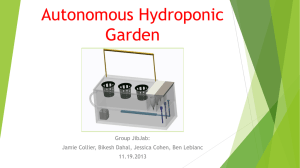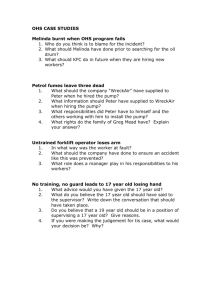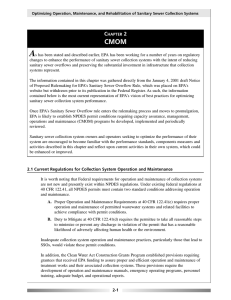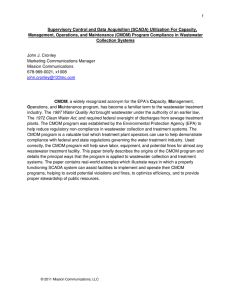Technical Session Descriptions 2015
advertisement
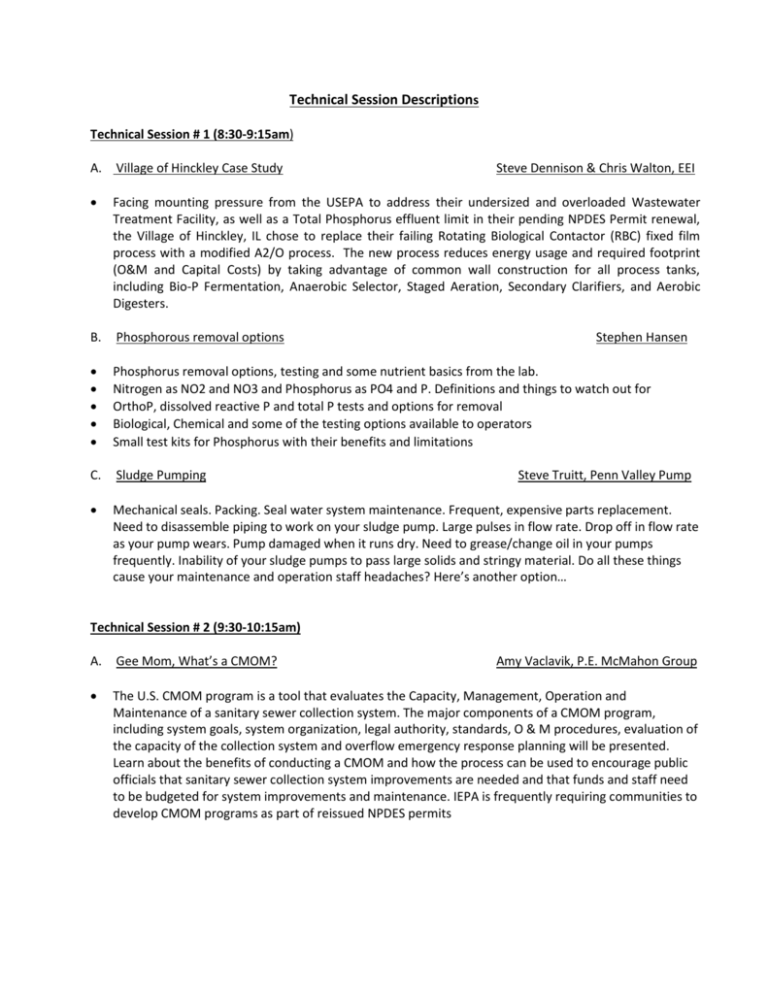
Technical Session Descriptions Technical Session # 1 (8:30-9:15am) A. Village of Hinckley Case Study Steve Dennison & Chris Walton, EEI Facing mounting pressure from the USEPA to address their undersized and overloaded Wastewater Treatment Facility, as well as a Total Phosphorus effluent limit in their pending NPDES Permit renewal, the Village of Hinckley, IL chose to replace their failing Rotating Biological Contactor (RBC) fixed film process with a modified A2/O process. The new process reduces energy usage and required footprint (O&M and Capital Costs) by taking advantage of common wall construction for all process tanks, including Bio-P Fermentation, Anaerobic Selector, Staged Aeration, Secondary Clarifiers, and Aerobic Digesters. B. Phosphorous removal options Phosphorus removal options, testing and some nutrient basics from the lab. Nitrogen as NO2 and NO3 and Phosphorus as PO4 and P. Definitions and things to watch out for OrthoP, dissolved reactive P and total P tests and options for removal Biological, Chemical and some of the testing options available to operators Small test kits for Phosphorus with their benefits and limitations C. Sludge Pumping Mechanical seals. Packing. Seal water system maintenance. Frequent, expensive parts replacement. Need to disassemble piping to work on your sludge pump. Large pulses in flow rate. Drop off in flow rate as your pump wears. Pump damaged when it runs dry. Need to grease/change oil in your pumps frequently. Inability of your sludge pumps to pass large solids and stringy material. Do all these things cause your maintenance and operation staff headaches? Here’s another option… Stephen Hansen Steve Truitt, Penn Valley Pump Technical Session # 2 (9:30-10:15am) A. Gee Mom, What’s a CMOM? Amy Vaclavik, P.E. McMahon Group The U.S. CMOM program is a tool that evaluates the Capacity, Management, Operation and Maintenance of a sanitary sewer collection system. The major components of a CMOM program, including system goals, system organization, legal authority, standards, O & M procedures, evaluation of the capacity of the collection system and overflow emergency response planning will be presented. Learn about the benefits of conducting a CMOM and how the process can be used to encourage public officials that sanitary sewer collection system improvements are needed and that funds and staff need to be budgeted for system improvements and maintenance. IEPA is frequently requiring communities to develop CMOM programs as part of reissued NPDES permits B. The A to Z in dismantling and reassembly of a submersible pump Anthony Jarvis, Grunfos For this presentation, employees will demonstrate the complete tear down and rebuild of our line of submersible pumps. Attendees will get to witness some features and benefits as well as obtain a full understanding of how to maintain, repair a submersible pump. Bring your questions and discussion points, as our presenter provide all of the answers C. Getting to Know ORP Greg Paul This session is intended to spark interest in a wastewater sleeping giant, ORP (Oxidation Reduction Potential) and is meant as a starting point for knowledge and understanding of it. Technical Session # 3 (10:45 – 11:30am) A. Operators “Bull” Session Russ Martin (Facilitator) Roundtable discussion of everyday operator issues B. The Automated Operation & Maintenance Manual for More Efficient Operation This session will discuss the purpose of the O & M software and how it can provide guidance for the operator to make process operational changes, notify the operator when equipment is due for scheduled maintenance and give direction on how to respond to critical alarms. C. SBR/ BNR Sequencing Batch Reactors - A Compact Alternative for BNR With the increasing regulatory pressure to reduce total phosphorous and total nitrogen in WWTP effluent, different secondary treatment technologies have been developed to effectively remove these nutrients. One technology that has numerous benefits is the use of sequencing batch reactors, or SBR. Brent W. Perz Ed Coggin


